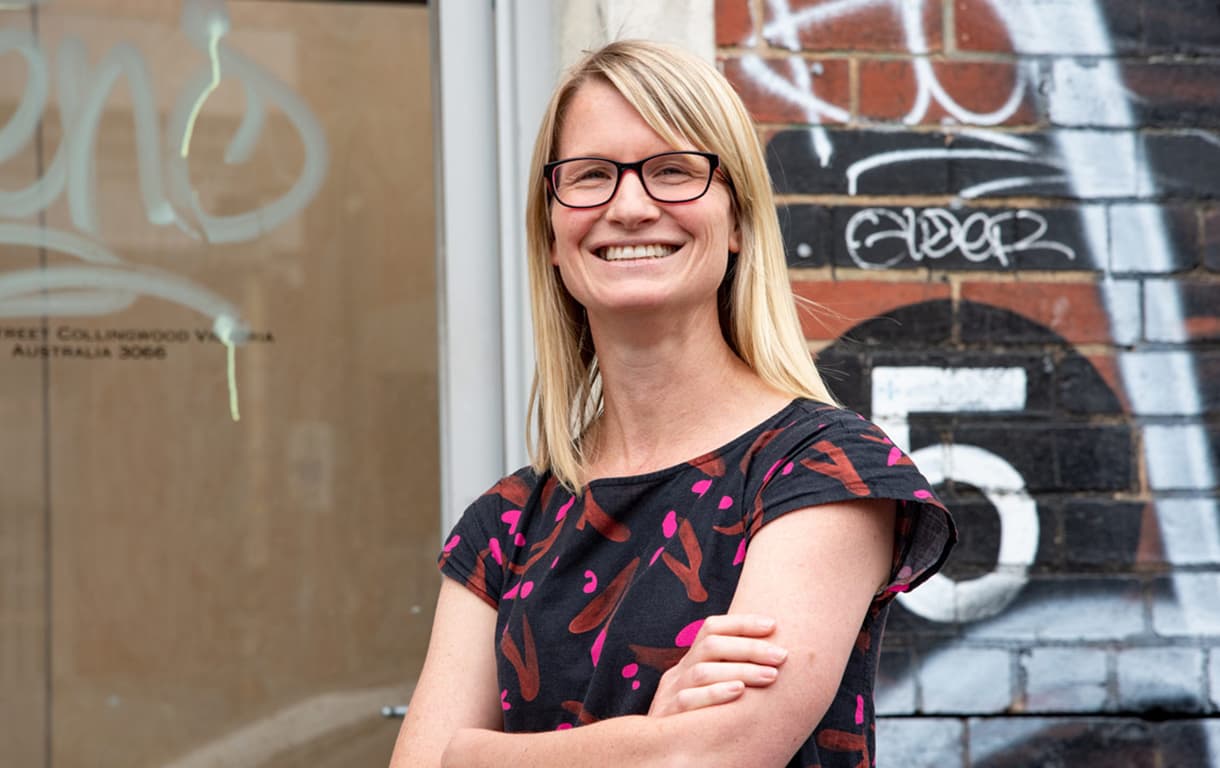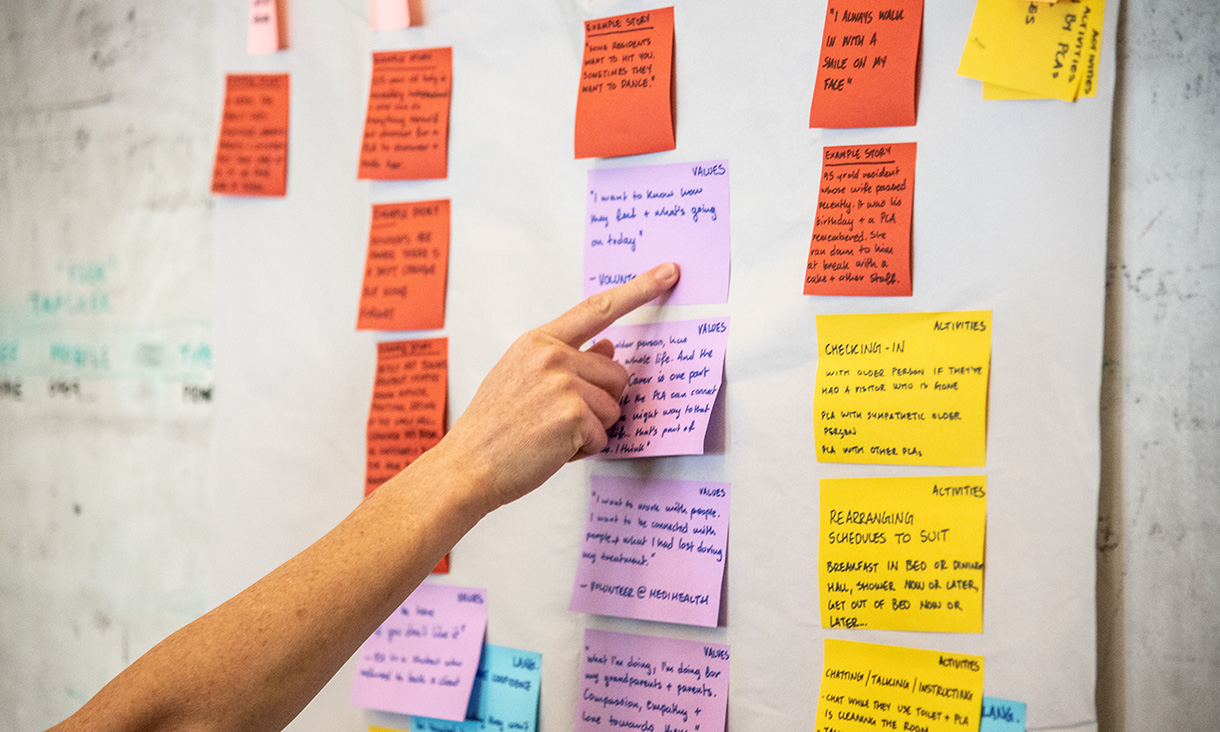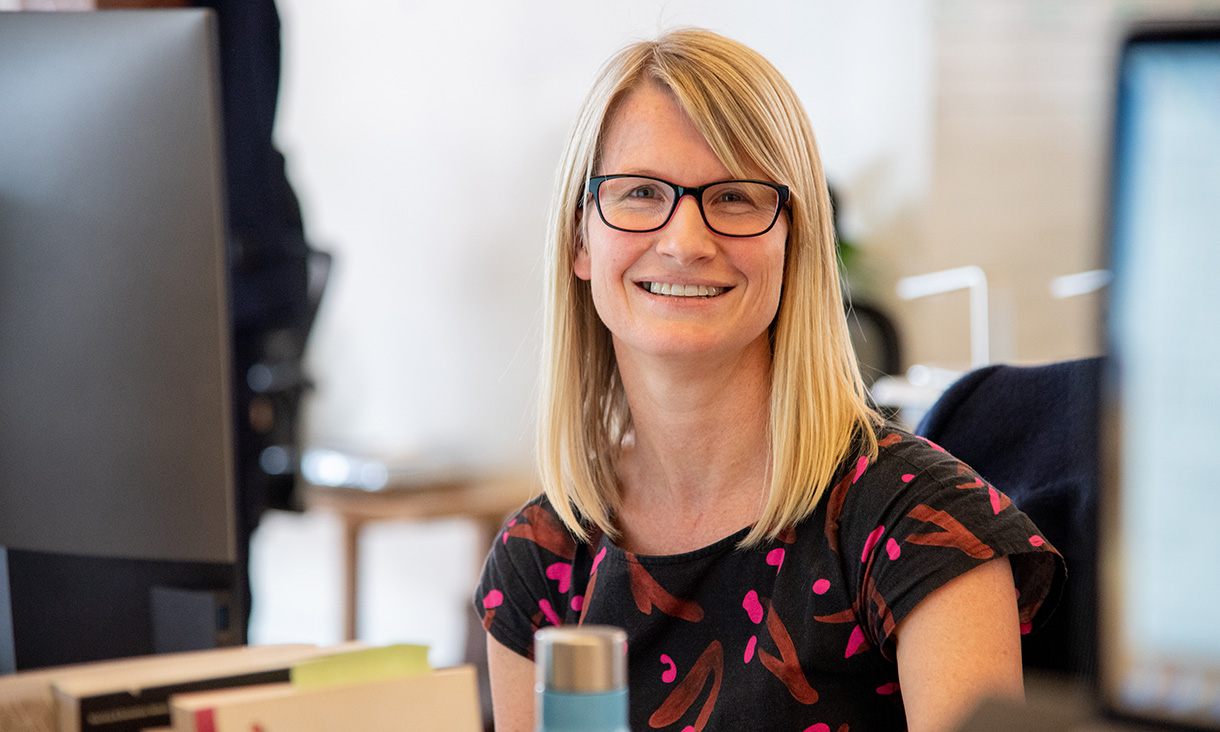From a corporate career to discovering human-centred design, Joanne is designing her future.

Why human centred design is a key future skill
From a corporate career to discovering human centred design, Joanne is seizing her future. Discover more about RMIT's Master of Design Futures.
Joanne was 16 years into a corporate career when she discovered human-centred design; that’s when she realised it was what she’d been missing in her trajectory.
“I’d been working in financial services when I got to collaborate with a human-centred design agency on a project. I realised that they were my people, and that a human-centred approach was what I’d been missing.”
Joanne started researching and integrating new design methods into her corporate role, but “found it was difficult to encourage others to take it up because I wasn't an expert.” She eventually went on to work at the original agency she’d partnered with.
She wanted to commit to “becoming an expert through study, and also learn more about the background and theory.”
Joanne decided to return to university for postgraduate study, and looked for a course with online study options and an emphasis on research.
“A lot of courses focused just on innovation and I was more interested in design research. I wanted the opportunity to study online too; I was working full time and I have a family, so I needed flexibility. The Master of Design Futures at RMIT focuses on in-depth knowledge and practical experience.”
The Master of Design Futures is a graduate course for working professionals seeking to build industry connections with their peers, while enjoying the freedom and flexibility of online education. Joanne has benefitted from these, and is quick to state that what drives her most is the freedom of being able to pursue the areas of human-centred design she’s most interested in.
“At first, I felt hesitant about being in a self-directed course, but now I find it liberating. My experience has increased my confidence and I'm now able to influence my clients and other designers.”
Joanne used her studies to pursue the interests and causes she’s passionate about, while enriching her understanding of how design methodologies can enact change.
“My course advisor encouraged me to do assignments on things I was passionate about. In a past job I had worked on a family violence project with the Department of Premier and Cabinet (DPC) in 2017 and I wanted to explore some of the challenges designers face when working on family violence projects, to draw out success factors that might inform better design practise.
“As a course assignment I compared two different family violence projects; starting with the one I had worked on in 2017. Following Australia’s first Royal Commission into Family Violence, the DPC funded a human-centred design project to learn about the lived experience of victim-survivors to understand their expectations for a reformed service system, to inform the government’s 10-year plan for reform. I compared that project with one in the UK in 2016 commissioned by Comic Relief seeking to understand the role of technology and how it can become an enabler for victim-survivors of family violence.
“Another project I worked on was with St Vincent's Hospital who created the Safe Haven café. A safe therapeutic after-hours space for people who experience social isolation and loneliness, often due to mental ill-health. My job was to help review the café from the perspective of the customers and employees, and inform the café’s strategy by understanding their motivations and experiences.”


Through her study at RMIT, Joanne has developed a deep understanding of human-centred design that helps her explain it to others and empower them to discover new ways of working.
“My personal definition of design is a really simple one. People can get hung up on terminology, but in my view, it’s about having empathy. It’s standing in the shoes of the people who are going to be affected by a system or service.
“Systems, services or places have traditionally been planned from the perspective of the organisation. The human-centred approach is different; it starts by talking to the people who will be affected by the service or system, so that we design from their perspective.”
Joanne believes the applications for human-centred design in future work are far-reaching; in anything from global problems, government systems, education or products.
“We need to respect that we all have different experiences and perspectives, and we want to learn to listen to people who are often not part of the conversation. It increases equality when you collaborate with people, rather than designing for them.”
Discovering human-centred design has helped Joanne succeed in her new role at Portable, a Collingwood based design and technology studio, as a Design Strategist Lead supporting a team of strategists working on design projects. Now nearing the end of her Masters, she incorporates the theory and background she’s learned into her day-to-day work for the studio.
“What’s next for me is embarking on my final project and integrating that into my practice at work. And then I’m considering doing a PhD!”